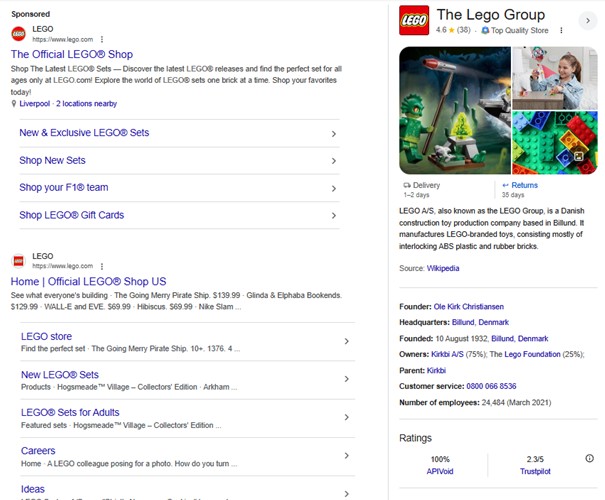Why entity SEO matters today
In This Article
The era of AI-powered, semantic search has transformed how discoverability works online. Search engines now look far beyond simple keywords, they interpret context, intent, and the relationships between “entities” in your content. For modern brands, entity SEO is the key to becoming and staying visible, relevant, and ensuring you future-proof your strategy in a fast-changing digital world. This guide gives you insight into how to create a practical entity-based strategy to best position your business for sustainable, AI-led growth.

What is entity-based SEO?
Entity-based SEO moves away from flat, keyword-only tactics. Instead, it focuses on optimising for people, brands, locations, products, and concepts, clearly defined “things” that search engines recognise and connect in their knowledge graphs. Unlike classic SEO’s string-based approach, entity-based SEO aligns your content with how Google, Bing, and AI systems (like LLMs) catalogue, associate, and highlight meaningful information.
Modern entity SEO strategies include tactics like entity optimisation, entity association SEO, and building robust internal linking to help engines grasp how your brand and offerings relate to the wider web. This approach enables visibility in features like Knowledge Panels, AI summaries, and “entity search SEO” results, which go far beyond blue links.
Lets take a look at some examples of entities in SEO. Entities show up in many forms:
- People: e.g. “Elon Musk,” “Adele”
- Brands: e.g. “Google,” “LEGO”
- Products: e.g. “iPhone 16”
- Places: e.g. “Singapore,” “Eiffel Tower”
- Concepts: e.g. “Sustainability,” “Digital Transformation”

Want to find out more about Entity SEO and Entity Optimisation services? Click here
Why entities are the future
Entities are now central to how search engines and AI platforms parse, dissect, and recommend content. As AI-driven answers (from Google’s SGE, ChatGPT, Gemini, etc.) become more prevalent, defining clear, credible entities is essential – and this importance will only grow as user behaviour evolves and the digital landscape shifts.Google entity SEO, and broader entity optimisation, ensures your brand is not only indexed, but accurately represented, cited, and recommended by the algorithms leading digital discovery. Investing now in an entity-first approach future-proofs your visibility and builds lasting digital trust.

How to optimise for entity SEO
Knowing how to optimise your site and content for entity SEO is the key to success. Here, we’ve outlined 7 of the most important elements to concentrate on:
1. Implement structured data and schema markup
Apply organisation, product, and localBusiness schema to your site, giving Google direct signals about your entities and their relationships. Entity optimisation starts with structured data – feeding platforms like the Knowledge Graph with rich, accessible information.
2. Build authoritative citations and third-party mentions
Mentions from credible external sources (news, Wikipedia, industry directories) reinforce your authority. Google entity stack benefits most from a broad, authentic digital footprint: links, mentions, and third-party references act as legitimacy signals to both search engines and AI.
3. Strengthen internal linking around entities
Design internal pathways based around core entity pages (such as founders, flagship products, or service locations). This makes it easier for engines to map relationships and boosts your site’s entity association SEO, a vital step for brands targeting higher entity salience scores.
For example; linking a CEO bio → company “About” page → press release announcing a new partnership helps Google connect the dots between the person (CEO), the organisation (brand), and the event (press release). This strengthens entity associations and increases the likelihood of visibility in Knowledge Panels and AI search results.
4. Establish entity salience with semantic connections
To boost entity salience, weave relevant relationships and context throughout content. (E.g. interlinking product features to innovation topics, CEO bios to industry milestones, awards to service pages.) Support these with references to authoritative datasets or patents. For instance, Google’s patents often cite entity recognition and association as core to how search engines process meaning.
For example, US11720577B2, “Contextualizing knowledge panels” (August 2023), explains how Google identifies both the entity and accompanying context terms in user queries to deliver tailored knowledge panels based on intent.
5. Maintain consistency and clarity across the web
Consistent naming, logo use, and up-to-date organisational details across Google, LinkedIn, Wikipedia, and industry profiles create stronger entity recognition. Inconsistencies dilute entity signals and disrupt AI-driven visibility.
6. Audit and refine entity search SEO performance
Use entity mapping tools, Found’s visibility audits, and Google’s NLP API to analyse how your site is classified and whether it matches your brand aspirations. Track progression in entity search SEO, refine gaps, and continually expand your network of recognised entities and associations.
7. Document all key relationships
Create entity relationship diagrams, showcasing company hierarchies, partnerships, and internal subject matter experts. Reference in content and structured data to ensure every important association is machine-readable and amplifies your domain expertise.
Entity SEO has become the linchpin of sustainable digital visibility. By pivoting from keyword obsession to entity-first optimisation, brands can claim space in AI-powered discovery, Knowledge Panels, and next-gen search results. A clear, strategic approach to entities in SEO builds trust, relevancy, and a reputation that endures as algorithms evolve. Find out more about our Entity SEO services or get in touch with our team for a chat about your brand.
Entity SEO FAQ's
Don’t stress, we’ve got
Google entity stacking refers to the practice of creating layered, interconnected profiles and pages across the web, each reinforcing your brand as a unique entity. Stack these by consistently linking organisational profiles, citation sources, schema markup, and high-authority mentions together. This web of references strengthens your site’s authority and improves how algorithms associate you with key topics, boosting rankings in entity search results.
Not quite. Semantic SEO focuses on context and meaning in content, while entity SEO focuses on clearly defined “things” (people, places, brands, concepts). The two overlap heavily, but entity SEO is more about aligning with Google’s Knowledge Graph.
Google uses natural language processing (NLP) and its Knowledge Graph to recognise and connect entities. For example, when you mention “Apple” in a tech article, schema markup and context tell Google whether you mean the fruit or the brand.



